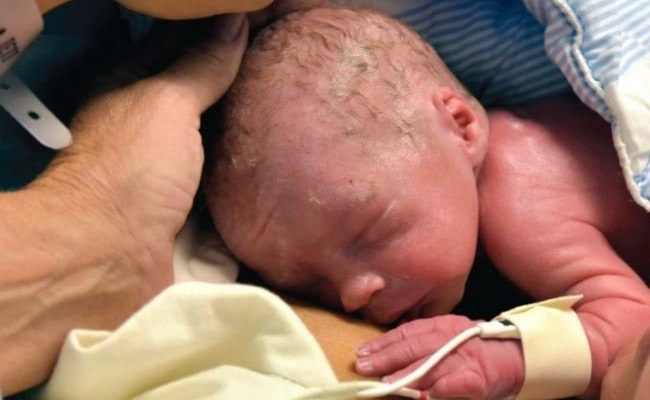At age 36 a Swedish woman who had her uterus removed due to cancer in her twenties gave birth to her own child as the world's first person to undergo a womb transplant. And the donor? Her own mother.
Uterus transplant in human beings requires a fitting donor and years of medication to avoid the risk of rejection. IVF can be performed only after a successful transplant surgery and a confirmed healthy state of the body. If all the steps are successful, the mother can experience a normal pregnancy cycle and give birth subsequently. The implanted uterus could withstand multiple pregnancies but it should be removed after, so the medication against rejection can be stopped.
The first researches on womb transplant in mammals date back to 1896, when an Austrian gynecologist obtained successful results on rabbits. In 1966 in the US, the same procedure saw promising outcomes on dogs. In October 2014, in an undisclosed location in Sweden, a baby was born from the world's first uterus human transplant. The newborn body weight at birth was 1,8 kg, born prematurely at 32 weeks he was delivered by cesarean section, marking another huge step forward for science. In the case of this Swedish mother, the donor was the grandma of the child to lower probability of rejection. Dr. Mats Brannstrom performed the surgery and delivered four boys from the transplanted womb, with a fifth on the way. He said there was something very special about this case: “It’s one uterus bridging three generations of a family”. The Swedish mother said in an interview: “It can’t be described how happy we are, it’s everything that I hoped for and a little bit more”.
Experts in the field describe womb transplant as a biggest breakthrough since the first successful IVF in 1978. This method brings new hope to couples struggling with infertility and women who had cancer or were born without a uterus.
Of course, we can only marvel at what’s possible in today’s medical science. But apart from technicalities, there is also a beautiful human side to this story about the grandmother offering her own womb to her daughter. How could this story inspire the design of the artificial womb? Will we ever pass our wombs from generation to generation? It sounds like science fiction, but it might become a reality sooner than we think.
This article is part of the Artificial Womb research project by NNN. The goal of this project is to develop thought-provoking scenarios that facilitate a much-needed discussion about the way technology radically alters our attitude towards reproduction, gender, relationships and love in the 21st century. We highly value your feedback or input, contributions can be sent to womb@nextnature.net.
Image: BBC

Share your thoughts and join the technology debate!
Be the first to comment